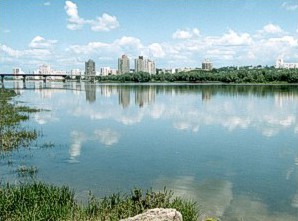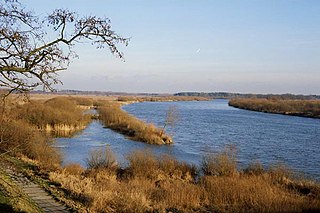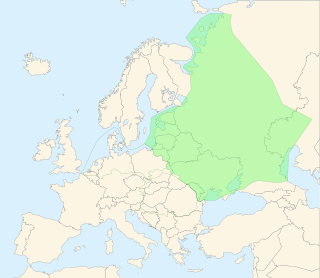Most prominent river basins
Prominent rivers of the Black sea drainage basin are the Danube, Dnieper, Don, Dniester, and Kuban.
Danube river basin
The Danube river runs through the largest number of countries in the world (the Nile is second with 9 countries). Originating in Germany, the Danube flows southeast for 2,850 km (1,770 mi), passing through or bordering Austria, Slovakia, Hungary, Croatia, Serbia, Romania, Bulgaria, Moldova and Ukraine before draining into the Black Sea. Its drainage basin extends into nine more countries.
The Danube river basin is home to fish species such as pike, zander, huchen, Wels catfish, burbot and tench. It is also home to a large diversity of carp and sturgeon, as well as salmon and trout. A few species of euryhaline fish, such as European seabass, mullet, and eel, inhabit the Danube Delta and the lower portion of the river.
Since ancient history, the Danube has been a traditional trade route in Europe. Today, 2,415 km (1,501 mi) of its total length are navigable. The river is also an important source of hydropower and drinking water.
Dnieper river basin
The Dnieper rises in the Valdai Hills near Smolensk, Russia, before flowing through Belarus and Ukraine to the Black Sea. It is the longest river of Ukraine and Belarus and the fourth-longest river in Europe, after Volga, Danube and Ural. The total length is approximately 2,200 km (1,400 mi) [1] with a drainage basin of 504,000 square kilometres (195,000 sq mi). Historically, the river was an important barrier, dividing Ukraine into right and left banks. Nowadays, the river is noted for its dams and hydroelectric stations. The Dnieper is an important navigable waterway for the economy of Ukraine and is connected via the Dnieper–Bug Canal to other waterways in Europe.
The total length of the river is variously given as 2,145 kilometres (1,333 mi) [1] or 2,201 km (1,368 mi), [2] [3] [4] [5] of which 485 km (301 mi) are within Russia, 700 km (430 mi) are within Belarus, [1] and 1,095 km (680 mi) are within Ukraine. Its basin covers 504,000 square kilometres (195,000 sq mi), of which 289,000 km2 (112,000 sq mi) are within Ukraine, [6] 118,360 km2 (45,700 sq mi) are within Belarus. [1]
The source of the Dnieper is the sedge bogs (Akseninsky Mokh) of the Valdai Hills in central Russia, at an elevation of 220 m (720 ft). [6] For 115 km (71 mi) of its length, it serves as the border between Belarus and Ukraine. Its estuary, or liman, used to be defended by the strong fortress of Ochakiv.[ citation needed ]
The southernmost point in Belarus is on the Dnieper to the south of Kamaryn in Brahin Raion. [7] The Dnieper has many tributaries (up to 32,000) with 89 being rivers of 100+ km. [8]
Don river basin
The Don is the fifth-longest river in Europe. Flowing from Central Russia to the Sea of Azov in Southern Russia, it is one of Russia's largest rivers and played an important role for traders from the Byzantine Empire. The Don rises in the town of Novomoskovsk 60 kilometres (37 mi) southeast of Tula (in turn 193 kilometres (120 mi) south of Moscow), and flows 1,870 kilometres to the Sea of Azov.
The Don 's basin is between the Dnieper basin to the west, the lower Volga basin immediately to the east, and the Oka basin (tributary of the Volga) to the north. Native to much of the basin were Slavic nomads. [9]
Dniester river basin
The Dniester rises in Ukraine, near the city of Drohobych, close to the border with Poland, and flows toward the Black Sea. Its course marks part of the border of Ukraine and Moldova, after which it flows through Moldova for 398 kilometres (247 mi), separating the main territory of Moldova from its breakaway region Transnistria. It later forms an additional part of the Moldova-Ukraine border, then flows through Ukraine to the Black Sea, where its estuary forms the Dniester Liman.
Kuban river basin
The Kuban river originates on the slopes of Mount Elbrus and forms at the merger of its two tributaries, Ullukam and Uchkulam; from the source of Ullukam to the delta, it has a length of 906 kilometres (563 mi). Between the source and Nevinnomyssk the river flows mostly in the deep and narrow gorge, has many thresholds and rapidly changes its elevation. At 116 kilometres (72 mi) from the mouth, the Kuban converges with a major tributary, the Protoka, which is 130 kilometres (81 mi) long. Near its mouth the Kuban narrows to 3 to 4 kilometres (1.9 to 2.5 mi) and then forms a delta covering about 4,300 square kilometres (1,700 sq mi). The delta contains numerous limans, some of which have gradually separated from the river. Until the 19th century the Kuban River discharged into both the Black and the Azov seas. However later, the rising grounds redirected the river entirely to the Azov Sea. [10] [11] [12] Azov Sea is a sea in Eastern Europe connected to the Black Sea by the narrow (about 4 km or 2.5 mi) Strait of Kerch, and is sometimes regarded as a northern extension of the Black Sea. [13] [14]
The average discharge of the Kuban River is at its maximum near Krasnodar at about 425 cubic metres per second (15,000 cu ft/s). It was formerly higher by some 30 cubic metres per second (1,100 cu ft/s) but was lowered by the reservoir construction. The average discharge near Armavir is 163 cubic metres per second (5,800 cu ft/s), and it formerly varied between 0.95 and 1,160 cubic metres per second (34 and 40,965 cu ft/s) before the filling of the Krasnodar Reservoir in the 1980s. The annual outflow to the Azov Sea is about 12 to 13 cubic kilometres (2.9 to 3.1 cu mi) of water, 8 million tonnes of sediments and 4 million tonnes of dissolved salts. [12]
The average turbidity is 682 g/m3. Water salinity increases toward the delta; it normally varies between 50 and 400 mg/L and may reach 1000 mg/L in some areas. All major tributaries flow into the Kuban from the left and originate in the Caucasus Mountains. Those tributaries include the Bolshoy Zelenchuk, Maly Zelenchuk, Urup, Laba, Belaya and Pshish. [10] [11] [12]














